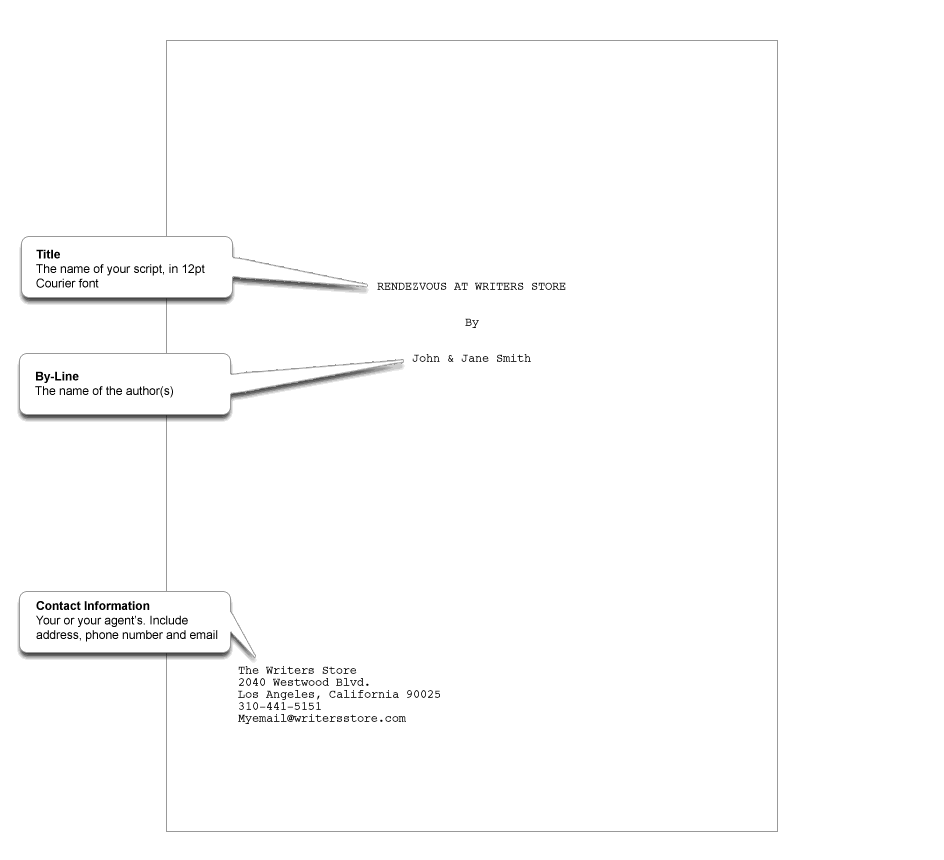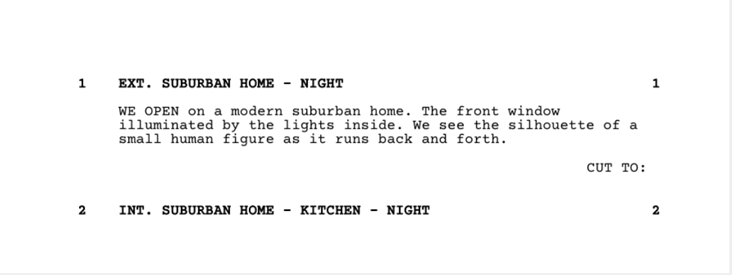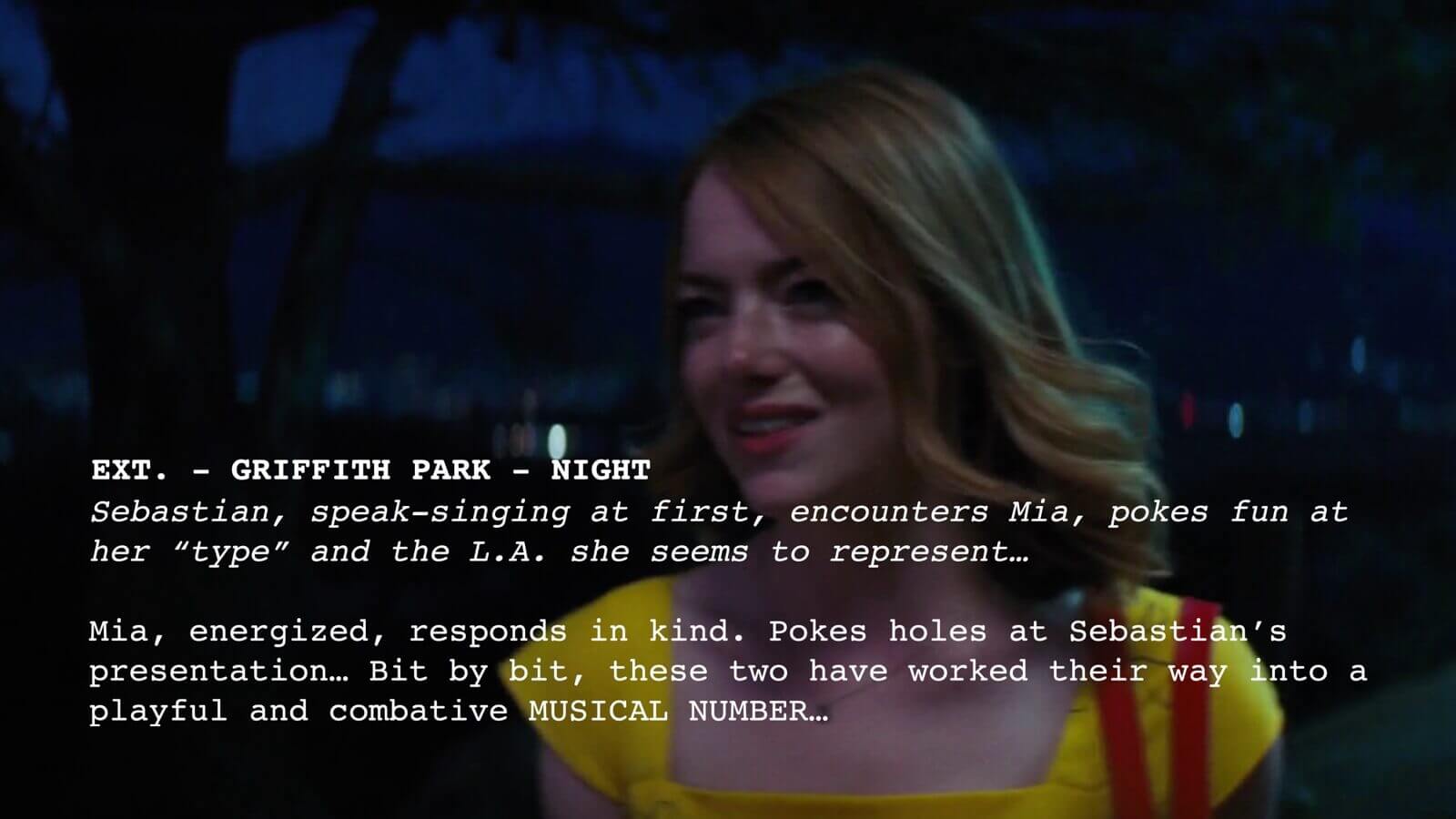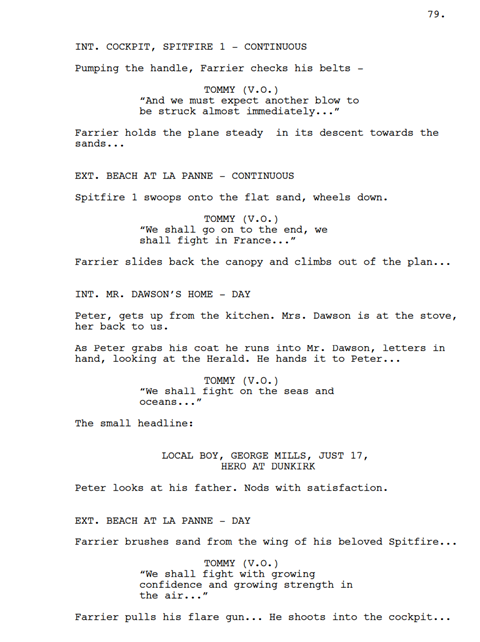Resources used: (‘Writers Store’) and (‘StudioBinder’)


Other Key Notes:
Character
- ‘When introducing a character into a scene, the name needs to be in capitals in the action description, and the age of the character along with they type of person they are, traits and personality.‘

Scene Heading
- ‘Typically choose either EXT. or INT. with a description of the setting in which the scene is taking place and what time of day the scene is occurring
- If the scene goes from the outside to the inside or vice versa then you write EXT/INT or INT/EXT
- You can use heading next to the scene heading so as to give more details such as specific locations‘

Subheading
- ‘Used to show a change in location without breaking the scene such as ‘Hallway’, ‘Garage’ or ‘Later’ so its assumed that the time of day is the same‘

Transitions
- ‘Not used very frequently but help to make clear the development of the plot and the story
- Transitions need to be capitalised‘

Action
- ‘Action lines should be written in the third person in present tense
- Remove unimportant pronouns etc. so that the script has a better flow and therefore easier to read
- Words that imitate sounds or important objects are often written in capital letters to draw attention to the importance of them‘
- ‘Be vague. Rather than go into detail about a characters internal thoughts, give a specific emotion such as ‘Jess is angry’

Dialogue
- ‘Dialogue is centered and the name of the character is capitalised
- Characters name should remain consistent throughout in the ID‘

Extensions
- (O.S.) – Something said off screen
- (V.O.)- voice over
- (pre-lap) – ‘Dialogue from the next scene begins to play before the current scene has finished‘
- (CONT’D) – ‘Dialogue continues with the same character speaking when there’s been a break for something such as an action line etc.‘

Parenthetical
- ‘Used to show actions that help to direct actors ‘(Taking out his…)’
- ‘Not needed to be used all the time, so use when necessary and leave when this information can be otherwise inferred by the actor
- They can also show how the line should be performed such as ‘(hesitates)’
- They are placed under the characters name‘

Camera Shots
- ‘Suggest shots without selecting the actual shots to use unless there is a specific look you have in mind (only when critical to the scenes outcome)
- In this example, POV makes clear that we are to see it from his perspective which has importance to the story
- Do restrictively so and only vaguely such as POV rather than giving full in detail breakdowns of the shots used‘

Lyrics
- ‘Don’t write down all lyrics as it would take up too much space
- Either: (a) Disperse the lyrics across the page with shot and action directions to choreograph the scene; or (b) describe the feel of the song and the sequence together, as seen below from the film, ‘La La Land’ by Damien Chazelle‘

Titles
- ‘The text that appear over the screen
- Begin with a subheading that describes the background of the title card such as ‘OVER BLACK’
- Use by starting an action line with ‘Title’ in all capitals, followed by the relevant information that you want to show to the audience such as the time of day, location etc.‘
Script examples and developing on these notes:
Get Out – (Written and Directed by Jordan Peele)

‘Introduces the character. Capitilisation of their name. Their age. The traits and personalities that they posses.‘
Dunkirk – (Written and Directed by Christopher Nolan)

‘Use of extensions. Several things are happening simultaneously while Tommy is providing voice over for all. Action lines used throughout. Multiple scene headings as the action alternates from train, to beach, to plane.‘
Shaun of the Dead (Written by Simon Pegg, Edgar Wright and Directed by Edgar Wright )

Scene heading. Action line. Dialogue.

Action lines. Extension of off screen dialogue.

Lyrics. Initial line of the song starts as they all are bemused and while the song continues, the focus shifts to the dialogue and action lines, describing the feel of the sequence.